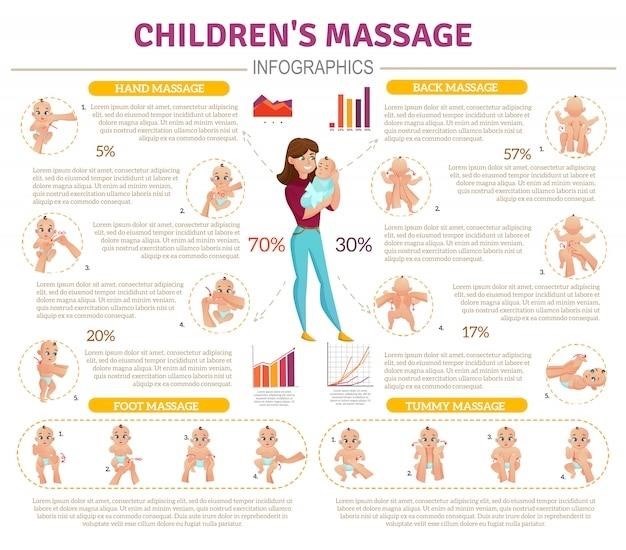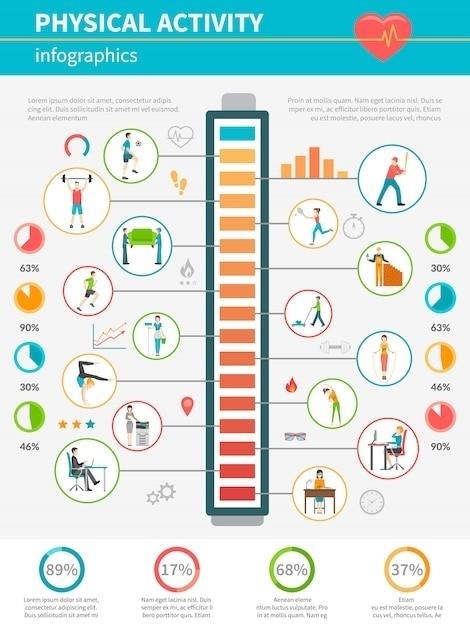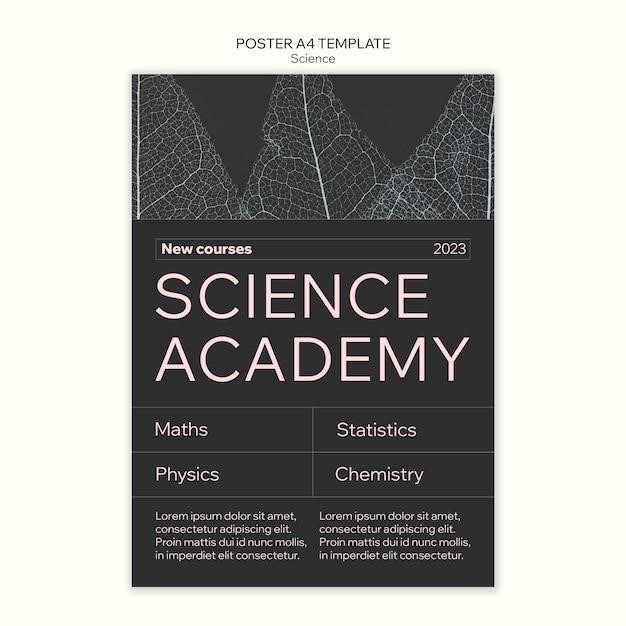Peabody Developmental Motor Scales 2 (PDMS-2)⁚ A Comprehensive Overview
The Peabody Developmental Motor Scales, Second Edition (PDMS-2) is a widely used and respected assessment tool for evaluating the fine and gross motor skills of children from birth through age 5. It provides a comprehensive evaluation of motor performance and can be used to identify motor deficits, determine eligibility for disability services, and guide intervention programs.
Introduction
The Peabody Developmental Motor Scales, Second Edition (PDMS-2), is a standardized assessment tool designed to measure the motor skills of children from birth to five years old. Developed by Rhonda Folio and Rebecca Fewell, the PDMS-2 is a valuable resource for professionals working with young children in various settings, including clinical, educational, and research environments. Its comprehensive nature makes it a valuable tool for identifying motor deficits, evaluating the effectiveness of intervention programs, and tracking developmental progress. The PDMS-2 provides a standardized and reliable method for measuring motor skills, allowing for comparisons across individuals and over time. This assessment tool has been widely adopted by professionals seeking to understand and support the motor development of young children.
Purpose and History of the PDMS-2
The primary purpose of the PDMS-2 is to provide a comprehensive assessment of a child’s gross and fine motor skills. It aims to identify children who may be experiencing motor delays or difficulties, allowing for early intervention and support. The PDMS-2 is a revised and expanded version of the original Peabody Developmental Motor Scales (PDMS), first published in 1983. The second edition, released in 2000, incorporated advancements in motor development research and refined the assessment procedures. The PDMS-2 has been widely adopted by professionals in various fields, including physical therapy, occupational therapy, special education, and early childhood development. Its widespread use and continued relevance demonstrate its effectiveness in assessing and understanding the motor abilities of young children.
Structure of the PDMS-2
The PDMS-2 is structured to assess both gross and fine motor skills, encompassing a wide range of movements and abilities. The assessment is divided into six subtests, each targeting specific motor domains. The four subtests for gross motor skills include⁚
- Reflexes⁚ Evaluates the presence and integration of primitive reflexes.
- Stationary⁚ Measures balance, coordination, and posture in static positions.
- Locomotion⁚ Assesses various forms of movement, including walking, running, hopping, and jumping.
- Object Manipulation⁚ Evaluates the ability to handle and manipulate objects in different ways.
The two subtests for fine motor skills are⁚
- Grasping⁚ Assesses the child’s ability to grasp and manipulate objects with their hands.
- Visual-Motor⁚ Evaluates hand-eye coordination, drawing skills, and the ability to copy simple shapes.
This comprehensive structure allows for a detailed assessment of a child’s motor development across various dimensions.
Gross Motor Skills
The PDMS-2 evaluates gross motor skills through four subtests, each designed to assess different aspects of movement and coordination. The Reflexes subtest focuses on the presence and integration of primitive reflexes, which are involuntary movements that are typically present in infants but should integrate over time. The Stationary subtest assesses balance, coordination, and posture in static positions, such as standing on one foot or maintaining balance while reaching for an object. The Locomotion subtest evaluates various forms of movement, including walking, running, hopping, jumping, and climbing, assessing both speed and accuracy. Finally, the Object Manipulation subtest evaluates the ability to handle and manipulate objects in different ways, such as throwing, catching, and kicking a ball.
These subtests provide a comprehensive evaluation of a child’s gross motor development, encompassing a wide range of essential movement skills. They are critical in identifying potential delays or difficulties in areas like balance, coordination, and motor planning, which can impact a child’s overall development and participation in daily activities.
Fine Motor Skills
The PDMS-2 assesses fine motor skills through two subtests, each focusing on different aspects of hand and finger dexterity. The Grasping subtest evaluates a child’s ability to grasp and manipulate objects using their hands and fingers, assessing skills like picking up small objects, using tools, and manipulating objects with precision. This subtest includes tasks like picking up small beads, using tweezers, and drawing lines and shapes. The Visual-Motor Integration subtest assesses the coordination between visual perception and motor skills, evaluating a child’s ability to copy shapes and patterns, draw lines, and complete puzzles. This subtest is crucial for tasks like writing, drawing, and building, which require the integration of visual information with fine motor control.
These subtests provide a comprehensive evaluation of a child’s fine motor development, encompassing essential skills for self-care, play, and academic success. They are particularly valuable for identifying potential delays or difficulties in areas like hand-eye coordination, manipulation skills, and visual-motor integration, which can impact a child’s ability to perform everyday tasks and participate in various activities.
Administration and Scoring
The PDMS-2 is administered individually to children, typically in a quiet and comfortable setting. The examiner presents the child with a series of tasks, observing their performance and recording their responses. The tasks are presented in a standardized manner, ensuring consistency across administrations. Each task is scored based on the child’s ability to complete it successfully, with specific criteria outlined in the examiner’s manual. Scores are then converted into standard scores, allowing for comparison to a normative sample of children of the same age.
The PDMS-2 includes detailed guidelines for administering the test, ensuring that the examiner understands the proper procedures and scoring criteria. The manual also provides detailed instructions for interpreting the results, allowing the examiner to draw meaningful conclusions about the child’s motor development. The scoring system is designed to be user-friendly, making it easy for examiners to record and interpret the child’s performance.
Interpreting Results
The PDMS-2 provides a comprehensive assessment of a child’s motor skills, offering valuable insights into their developmental progress. The results are typically presented in the form of standard scores, which allow for comparisons to a normative sample of children of the same age. These standard scores are then categorized into seven performance levels⁚ very superior, superior, above average, average, below average, poor, and very poor. Higher scores indicate better motor performance, while lower scores suggest areas where the child may need additional support.

Interpreting the results of the PDMS-2 requires careful consideration of the child’s individual circumstances and developmental history. The examiner should take into account the child’s age, medical history, and any other relevant factors that may influence their motor skills. By integrating the PDMS-2 results with other assessments and observations, the examiner can gain a more complete understanding of the child’s overall development and identify any areas that require further investigation or intervention.
Applications of the PDMS-2
The PDMS-2 is a versatile assessment tool with a wide range of applications in clinical and research settings. It is widely used by professionals such as physical therapists, occupational therapists, and special education teachers to identify and assess motor deficits in children. The PDMS-2 can help determine eligibility for intervention programs, such as early intervention services or physical therapy, and guide the development of individualized treatment plans.
Beyond its clinical applications, the PDMS-2 is also a valuable tool for research. Researchers use it to investigate the development of motor skills in children, evaluate the effectiveness of interventions, and explore the relationship between motor skills and other developmental domains. The PDMS-2’s robust psychometric properties and its wide range of applications make it a valuable resource for both clinical practice and research.
Clinical Use
The PDMS-2 is a cornerstone in clinical settings, serving as a vital tool for diagnosing and monitoring motor development in young children. It helps identify motor difficulties, such as delays or impairments, providing a foundation for targeted intervention strategies. This information is crucial for developing individualized treatment plans and determining the appropriate level of support for a child’s needs.
Clinicians utilize the PDMS-2 to evaluate a child’s progress over time, ensuring that interventions are effective and adapting them as necessary. The assessment helps determine eligibility for various services, including physical therapy, occupational therapy, and early intervention programs. It also provides valuable insight into the child’s strengths and weaknesses, enabling clinicians to tailor treatment plans that address specific areas of concern.
Research Use

The PDMS-2 serves as a valuable tool in research investigating motor development and the effectiveness of interventions. Researchers utilize the PDMS-2 to gather objective data on motor skills in various populations, including children with developmental disabilities, premature infants, and children at risk for motor delays. This data is crucial for understanding the factors that influence motor development and identifying effective interventions.
The PDMS-2’s standardized nature allows researchers to compare results across studies and populations, providing a robust framework for examining the impact of interventions on motor development. It also allows researchers to investigate the relationship between motor skills and other developmental domains, such as language, cognitive function, and social-emotional development.
Advantages and Limitations of the PDMS-2
The PDMS-2 offers several advantages, including its well-established reliability and validity, comprehensive coverage of motor skills, and user-friendly format. The standardized procedures and scoring system ensure consistent administration and interpretation across different settings and examiners. The PDMS-2’s inclusion of both gross and fine motor skills allows for a holistic assessment of a child’s motor abilities. Its clear instructions and scoring guidelines make it accessible for both experienced and novice testers.
However, the PDMS-2 also has some limitations. One notable limitation is its focus on children up to 5 years of age, which may not be suitable for older children or individuals with more complex motor impairments. Additionally, the PDMS-2 relies heavily on observation and performance, which may be influenced by factors such as a child’s motivation, attention, and cultural background. It’s important to consider these limitations when interpreting the results of the PDMS-2.
The Peabody Developmental Motor Scales-Second Edition (PDMS-2) remains a valuable assessment tool for evaluating motor development in young children. Its comprehensive coverage of motor skills, standardized procedures, and ease of administration make it a widely used instrument in clinical and research settings; While the PDMS-2 has certain limitations, such as its age range and reliance on observation, its strengths in providing a reliable and valid measure of motor abilities make it a valuable resource for professionals working with children. The PDMS-2 continues to contribute to our understanding of motor development and supports the identification and intervention of motor difficulties in young children.





















